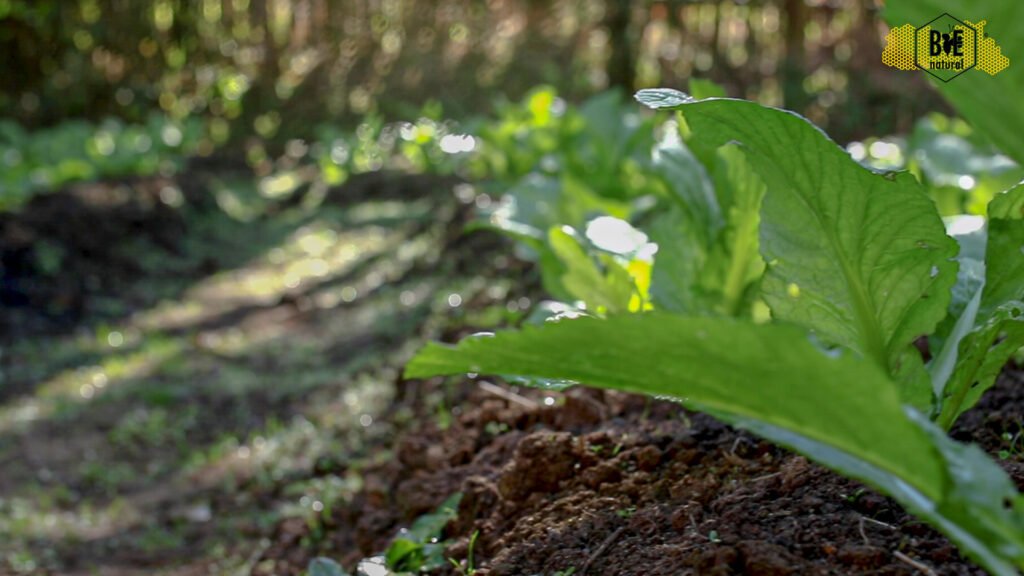
Do you know what a kitchen garden is? No, it’s not a garden inside your kitchen. If that were so, your kitchen would be a mess. According to the dictionary, it is “a garden or area where vegetable, fruits or herb is grown and is used for domestic purposes”.
Back in the days, a small plot of land near to the house was always used for growing a variety of vegetables according to the season. It was predominantly seen especially in the rural areas. They would grow local varieties such as spinach, maize, chillies, cauliflower, pumpkins, and much more that would be consumed just for the family members.
With the passage of time, people have become aware of their health. In short, we are all becoming “health-conscious”. Surely, it is not a bad thing to be health-conscious, it is when you start being conscious about your health when you start living healthy. We all know that a healthy life leads to a long life. With steady development in our society, concrete buildings are booming every day; it is obvious we will not have a small area of land next to our houses to make a kitchen garden. Nevertheless, there are different ways you can achieve having a kitchen garden for your household.
With the onset of spring, this is the perfect time for you to grow your all time favourite seasonal vegetables. Here, we will show you how to set up your kitchen garden and provide you with tips and tricks on how to produce varied and nutritious herbs and vegetables for use in the kitchen.
You will be surprised at how kitchen gardening in urban areas is much simpler than you imagined. No, you don’t need to sit under the scorching sun preparing the soil and manures. We have some simple and easy ways for you. So, sit back, relax and keep reading.
If you have some space or area that is free in your balcony, patio, or terrace which receives sufficient sunlight, then you are good to go. If you have the space, you can also set it up on the window sills and vertical walls. Mind you, anyone can be a kitchen gardener, all you need is a little patience, knowledge, and spare time for your garden.
Try to choose vegetables that you love to eat, and choose plants that are easy to grow in partial shade, as most of the time spaces like balconies, patios won’t receive full sunlight.
You can start off by growing green leafy vegetables like coriander, lettuce or even tomatoes and root vegetables like ginger and carrots. First and foremost you will have to purchase the seeds of what you would like to grow as well as soil from the market, if you do not have ready access to soil near you. The next step would be to get your compost. We’d suggest you try to make the compost by yourself at home. It is truly simple. All you need is raw kitchen waste like vegetable peels, eggshells, and used tea leaves.
Below here we will show you how to grow certain herbs and vegetables in your kitchen garden.
Tomatoes
Take a few slices of tomato and place it in a pot. Sprinkle a handful of soil on top. The sprouts will begin to appear after 10 to 12 days. After about 2 weeks, once your tomato seedling has germinated, transplant it to a bigger pot in your garden. One can also grow capsicum and chilies with seeds at home.
Ginger
Did you know that you can grow ginger from the buds on the ginger? Ginger grows under the soil and can be buried about two inches under the ground and kept in a sunny spot. Pick a piece of ginger with many bumpy nodules (sprouts) at the tips (these are the buds). Place one or two inches of potting soil below the ginger and sprinkle just a half-an-inch above and water the plant well, regularly. Once the leaves dry up after six months, it is ready to be harvested.
Coriander
Coriander is a must grow in every kitchen garden. Both the seeds or leaves add aromatic flavour to our food. You can grow coriander in a tray or pots filled with good compost. Coriander plants have deep taproots so the pots or trays need to be at least 25cm deep. Scatter seeds on the surface, cover with a cotton cloth, and water well. Germination of coriander takes up to 3 weeks, so ensure the soil doesn’t dry out.
Advantages of a Kitchen Garden
- A kitchen garden not only provides fresh and pesticide-free food but the process itself can be therapeutic.
- Gardening can be picked as a hobby and has a positive impact on our well being.
- Kitchen gardening also makes us recycle our waste, like using food containers and tetra packets as a pot for the plants.
- Saves the cost of buying vegetables and herbs.
Tips for beginners to set up a kitchen garden
- Plants become healthy with nutrients in the soil. Add organic compost made out of vegetable peels and used tea leaves to the soil to improve its quality.
- Do not water excessively. Water the plants only when required or when the soil is dry.
- To avoid pest attacks, use black pepper spray.
- Remove drying, wilting leaves, and flowers to encourage new growth of the plants.
What you’re waiting for! Go right ahead and grow your very own kitchen garden. We hope these tips will help you live a healthier lifestyle.
- Why is Food Traceability important for BEE Natural - November 3, 2023
- Easy to make vegan Jack Fingers Recipe | Bee Natural Jackfruit Chunks - April 11, 2023
- Jackfruit, the Superfood - August 18, 2022
